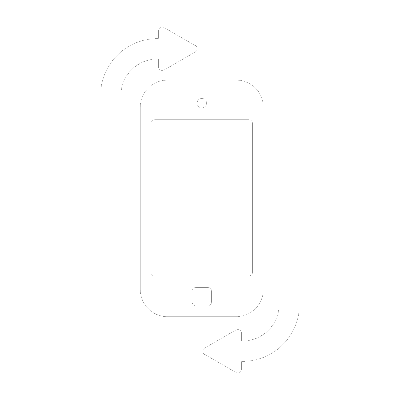How to Start Trading Gold Online: A Step-by-Step Guide
 Date: 2024-12-09 |
Date: 2024-12-09 |
How to Start Trading Gold Online: A Comprehensive Guide
Gold trading has become increasingly accessible and popular, thanks to online platforms that allow individuals to participate in the global gold market. Whether you're a beginner or an experienced trader, understanding the steps involved in trading gold online is essential for success. This article provides a detailed guide to help you navigate the process, from choosing the right platform to developing effective strategies.
Step 1: Understand Gold Trading
Before diving into trading, it’s essential to understand what gold trading entails. Gold trading involves speculating on the price movements of gold in financial markets, typically through derivatives like contracts for difference (CFDs), futures, or exchange-traded funds (ETFs). Unlike investing in physical gold, trading focuses on price fluctuations, offering opportunities for both short-term and long-term gains.
Key benefits of trading gold online include:
- Accessibility to global markets.
- The ability to trade without owning physical gold.
- High liquidity and potential for profit in both rising and falling markets.
Step 2: Research the Gold Market
Successful gold trading requires a solid understanding of the market. Research the factors that influence gold prices, such as:
- Economic Indicators: Data like inflation rates, interest rates, and GDP growth can affect gold prices.
- Currency Movements: Gold prices often have an inverse relationship with the U.S. dollar.
- Geopolitical Events: Political tensions, wars, or economic instability can drive demand for gold as a safe-haven asset.
- Supply and Demand: Industrial uses, jewelry demand, and mining production impact the market.
By staying informed about these factors, you can make better trading decisions.
Step 3: Choose a Reliable Online Broker
Selecting the right broker is a critical step in starting your gold trading journey. Look for a broker that meets the following criteria:
- Regulation: Ensure the broker is regulated by a reputable financial authority, such as the FCA, SEC, or ASIC.
- Trading Platform: Choose a broker with a user-friendly and reliable platform, such as MetaTrader 4 or 5, featuring advanced tools for analysis.
- Fees and Spreads: Compare fees, spreads, and commissions to find a cost-effective option.
- Leverage Options: Understand the leverage levels offered and their associated risks.
- Customer Support: Ensure the broker provides responsive customer service to address issues promptly.
Step 4: Open and Fund Your Trading Account
Once you’ve chosen a broker, the next step is to open a trading account. The process typically involves:
- Registration: Provide personal information, including your name, email, and proof of identity.
- Verification: Submit required documents for identity verification as part of anti-money laundering (AML) regulations.
- Funding Your Account: Deposit funds into your account using a payment method like bank transfer, credit card, or e-wallet. Start with an amount you’re comfortable risking.
Step 5: Learn Trading Basics and Strategies
To trade gold successfully, familiarize yourself with trading basics and strategies:
- Understand Chart Patterns: Learn to read gold price charts and identify trends. Common patterns include support and resistance levels, trendlines, and candlestick patterns.
- Technical Indicators: Use tools like moving averages, RSI, and MACD to analyze market movements.
- Risk Management: Set stop-loss and take-profit levels to limit potential losses and lock in profits.
- Leverage Wisely: Use leverage cautiously, as it can amplify both gains and losses.
Popular gold trading strategies include:
- Trend Following: Enter positions in the direction of the market trend.
- Range Trading: Buy near support levels and sell near resistance levels during sideways markets.
- News Trading: React to major economic or geopolitical events that impact gold prices.
Step 6: Practice with a Demo Account
Most brokers offer demo accounts that allow you to practice trading with virtual money. A demo account is invaluable for:
- Testing your trading strategies without risking real money.
- Familiarizing yourself with the trading platform.
- Gaining confidence before transitioning to a live account.
Spend time practicing until you consistently achieve positive results in the demo environment.
Step 7: Start Trading Gold Live
Once you’re confident in your skills, transition to live trading. Begin with small trades to minimize risk while gaining real-world experience. Monitor your positions closely and stick to your trading plan.
Remember to:
- Stay disciplined and avoid emotional trading.
- Continually analyze your trades to identify areas for improvement.
- Keep up with market news and trends to adapt your strategies.
Step 8: Monitor and Optimize Your Performance
Successful trading is an ongoing process of learning and adaptation. Regularly review your performance by:
- Analyzing your trading history to identify successful and unsuccessful strategies.
- Adjusting your approach based on market conditions.
- Keeping a trading journal to document your decisions and outcomes.
Step 9: Diversify Your Portfolio
While gold trading can be lucrative, it’s essential to diversify your investments to reduce risk. Consider trading other assets like currencies, stocks, or commodities alongside gold. Diversification ensures that your portfolio isn’t overly dependent on a single market.
Step 10: Stay Updated and Keep Learning
The gold market is constantly evolving, influenced by economic, political, and technological developments. Stay informed by:
- Following financial news and market analysis.
- Attending webinars, courses, or seminars on gold trading.
- Networking with other traders to exchange insights and strategies.
Continuous learning and adaptability are key to long-term success in gold trading.
Conclusion
Trading gold online can be a rewarding endeavor, offering opportunities for profit in both rising and falling markets. By following these steps—understanding the market, choosing the right broker, practicing strategies, and staying informed—you can build a solid foundation for success.
Gold trading requires discipline, patience, and a willingness to learn. Whether you’re trading to diversify your portfolio or seeking a reliable investment, the key is to approach the market with a well-thought-out plan and a commitment to continuous improvement.












